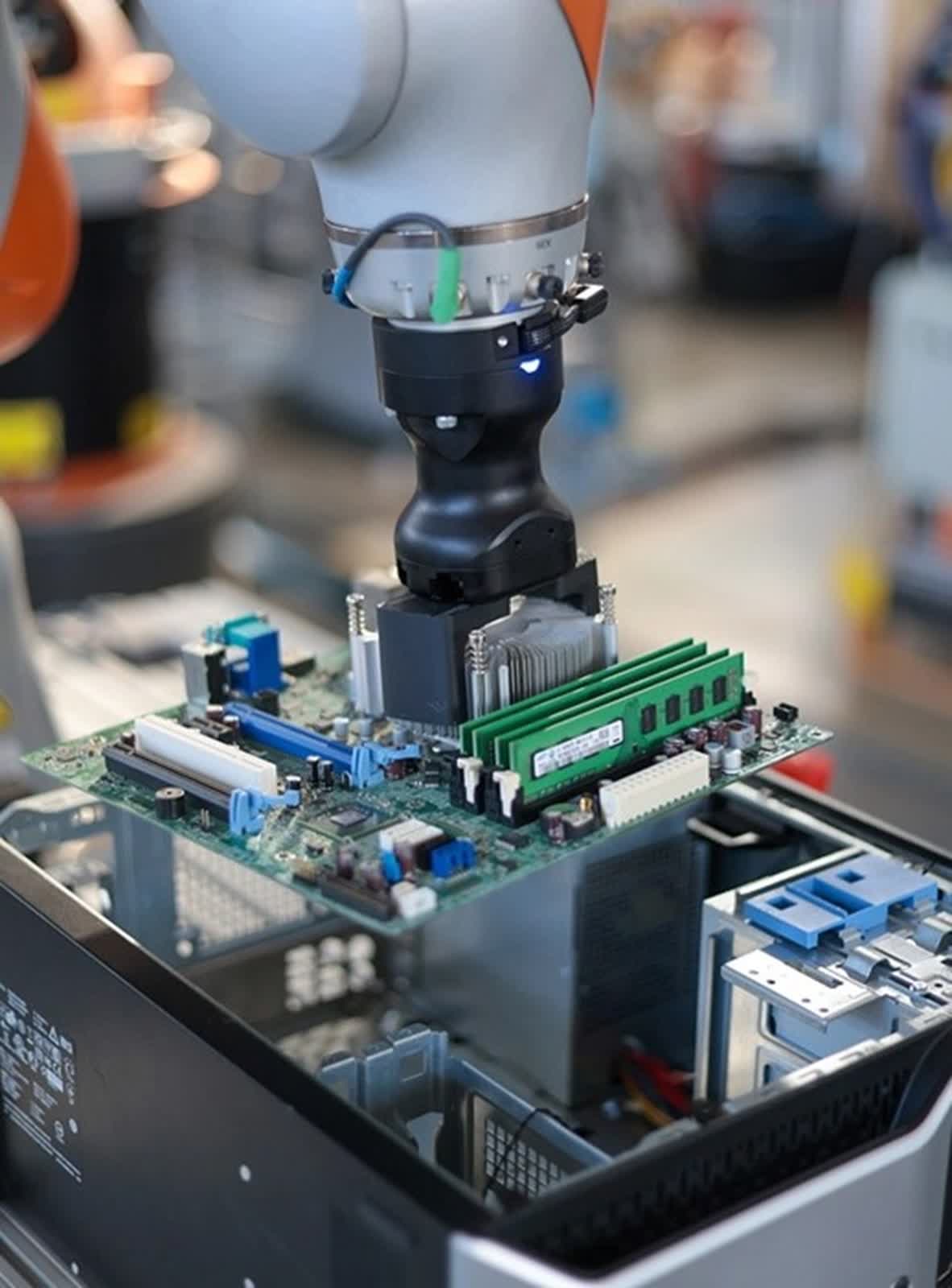Forward-looking: As devices become obsolete at an alarming rate, the issue of electronic waste has become increasingly pressing. A project has emerged combining measurement and robot technology with AI and knowledge management that seeks to address this issue.
The problem is difficult to overstate. The European Union alone generated approximately five million tons of electronic waste in 2022. The U.S., for its part, produces 6.9 to 7.6 million metric tons of electronic waste annually, which translates to about 46-47 pounds of e-waste per person per year. By 2030, global generation of e-waste is projected to increase to 74.7-82 million metric tons.
Meanwhile, the current state of electronic recycling is far from ideal. Manufacturing processes in the electronics industry prioritize cost-effectiveness over recyclability, leading to devices that are difficult to dismantle and separate into their constituent parts. Traditional recycling methods often involve manual dismantling, which is both costly and inefficient. Moreover, many devices end up being shredded, a process that limits the potential for recovering valuable components.

To address this growing crisis, researchers at the Fraunhofer Institute in Magdeburg, Germany, have developed iDEAR, which stands for Intelligent Disassembly of Electronics for Remanufacturing and Recycling. It not only makes electronic recycling more effective but also could one day help manufacturers access valuable raw materials. So far, the iDEAR system has successfully removed mainboards from PC housings – a task that requires a high degree of precision and sensitivity.
The iDEAR process begins with an identification and diagnosis phase. AI-powered 3D cameras and optical sensor systems scan the electronic waste, capturing information such as manufacturer details, product type, and serial numbers. These systems then go beyond identification, assessing the condition of components, detecting anomalies, and evaluating the state of connecting elements like screws and rivets.
José Saenz, group leader for assistance, service, and industrial robots at the Fraunhofer IFF, explains that the optical measurement technology plays a vital role in detecting labels and sorting various components. Machine learning algorithms, trained on vast datasets, can identify and classify materials, plastics, and components in real-time based on sensor and spectral data. It can identify, for instance, whether a screw is hidden or rusted, Saenz said.
A key innovation in the iDEAR project is the creation of a digital disassembly twin for each product. The twin serves as a record of the device, including information about its components and any prior disassembly of similar products.
Once the device has been thoroughly analyzed, the system defines disassembly sequences using specialized software. These sequences determine whether a complete or partial disassembly should occur, with the latter focusing on recovering high-value components.
The robot then receives a series of instructions, guiding it through tasks such as removing screws, opening housings, and extracting components.
While the current focus of the iDEAR project is on PC recycling, the researchers have ambitious plans for the future. Saenz envisions a data-driven methodology that can adapt to a wide range of electronic devices, from microwaves to large appliances, with minimal engineering effort.
Source link